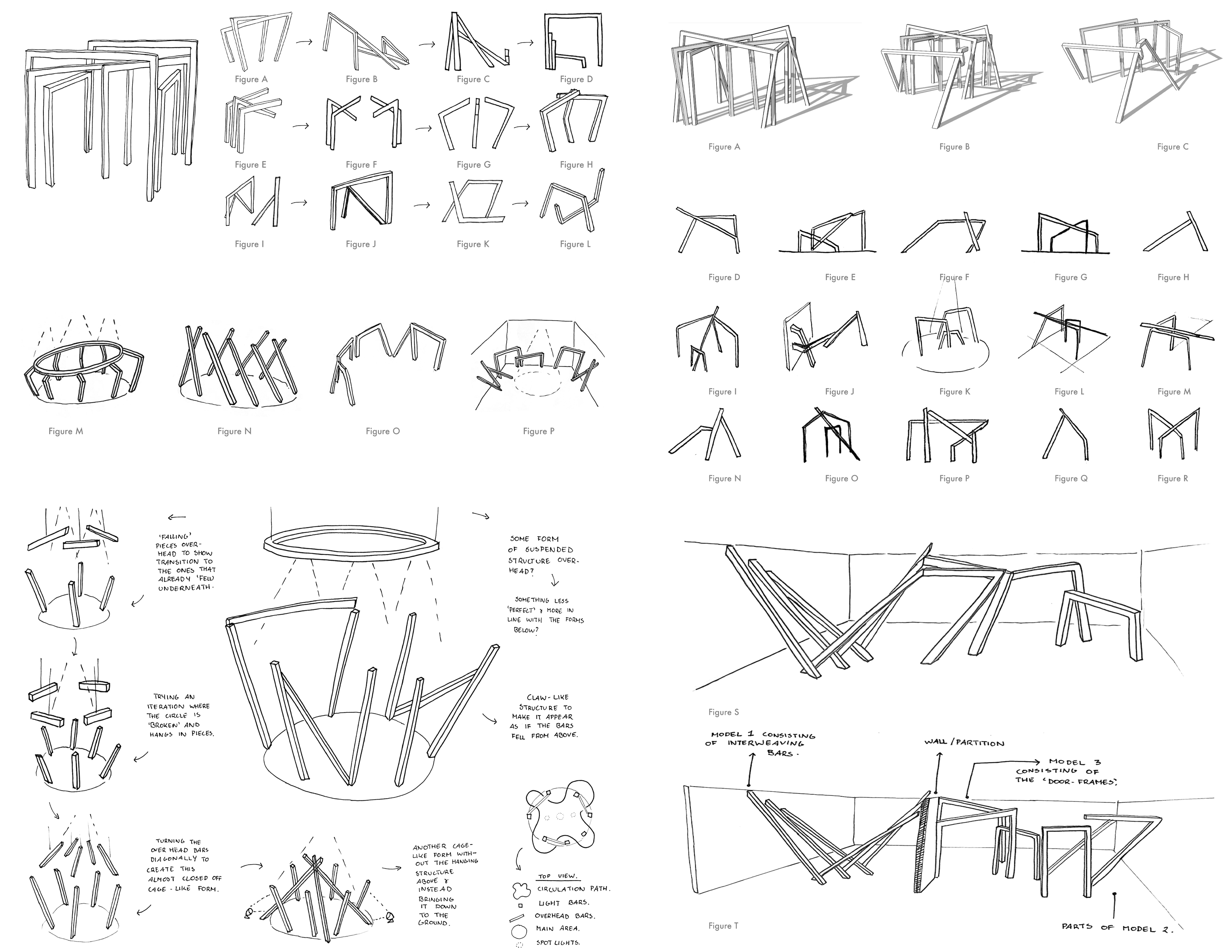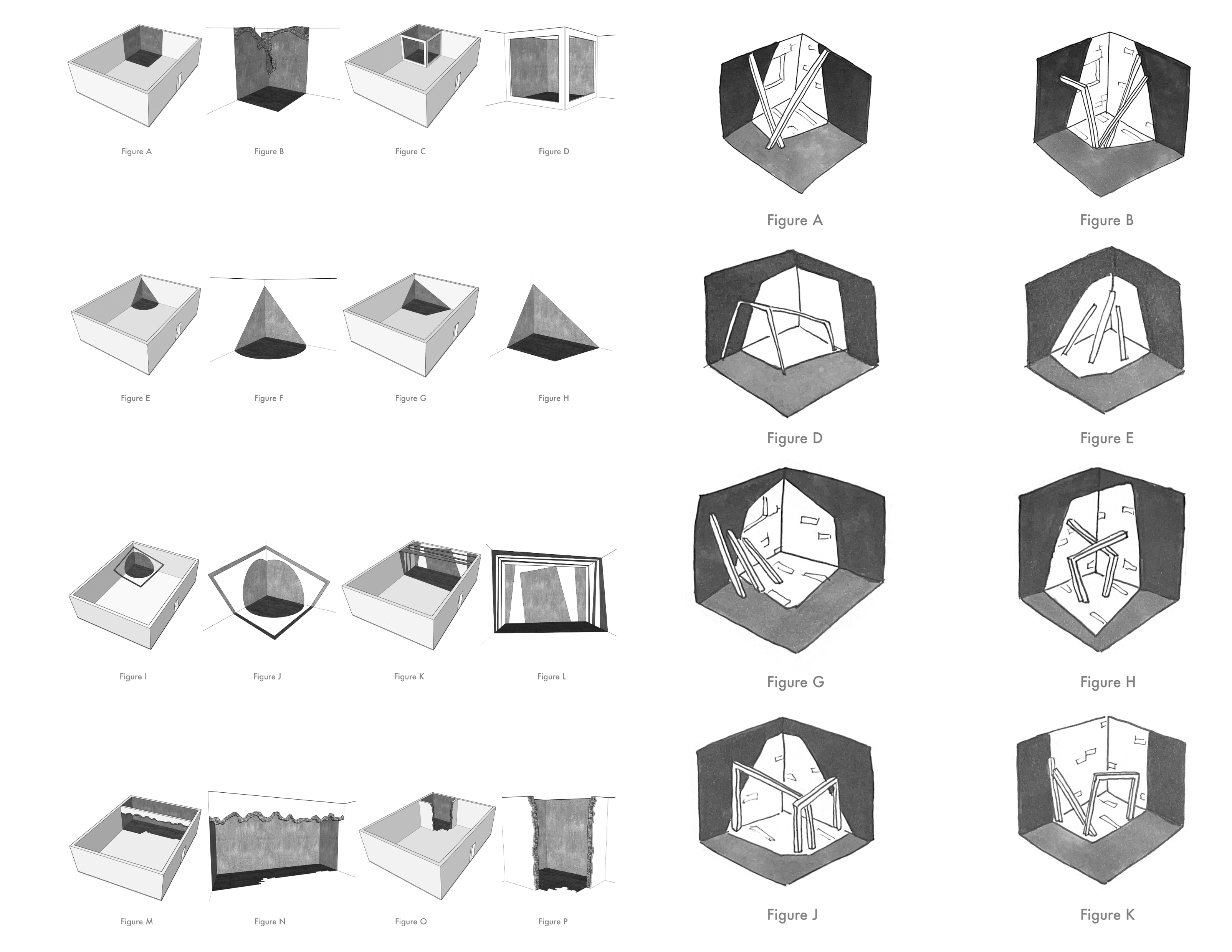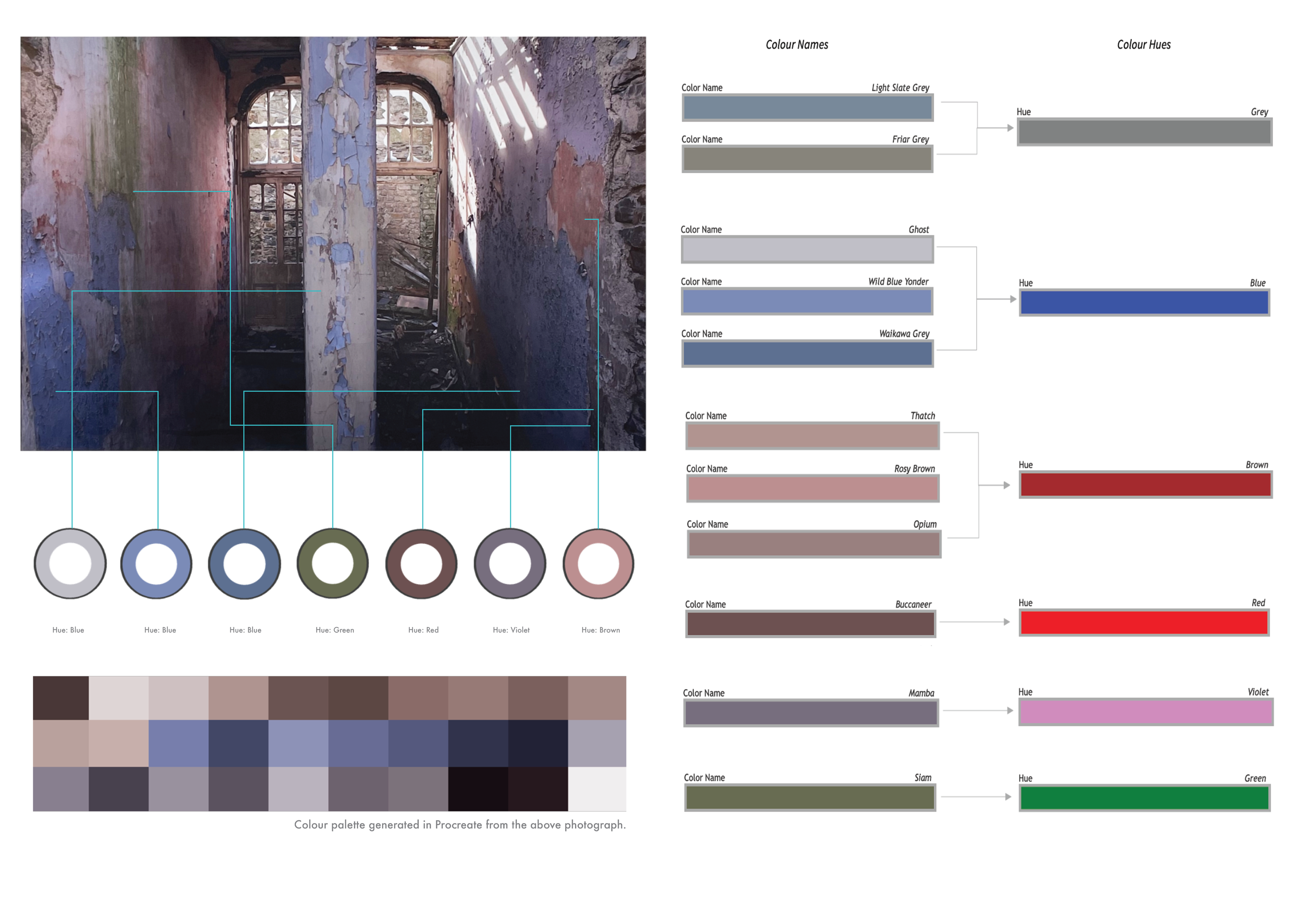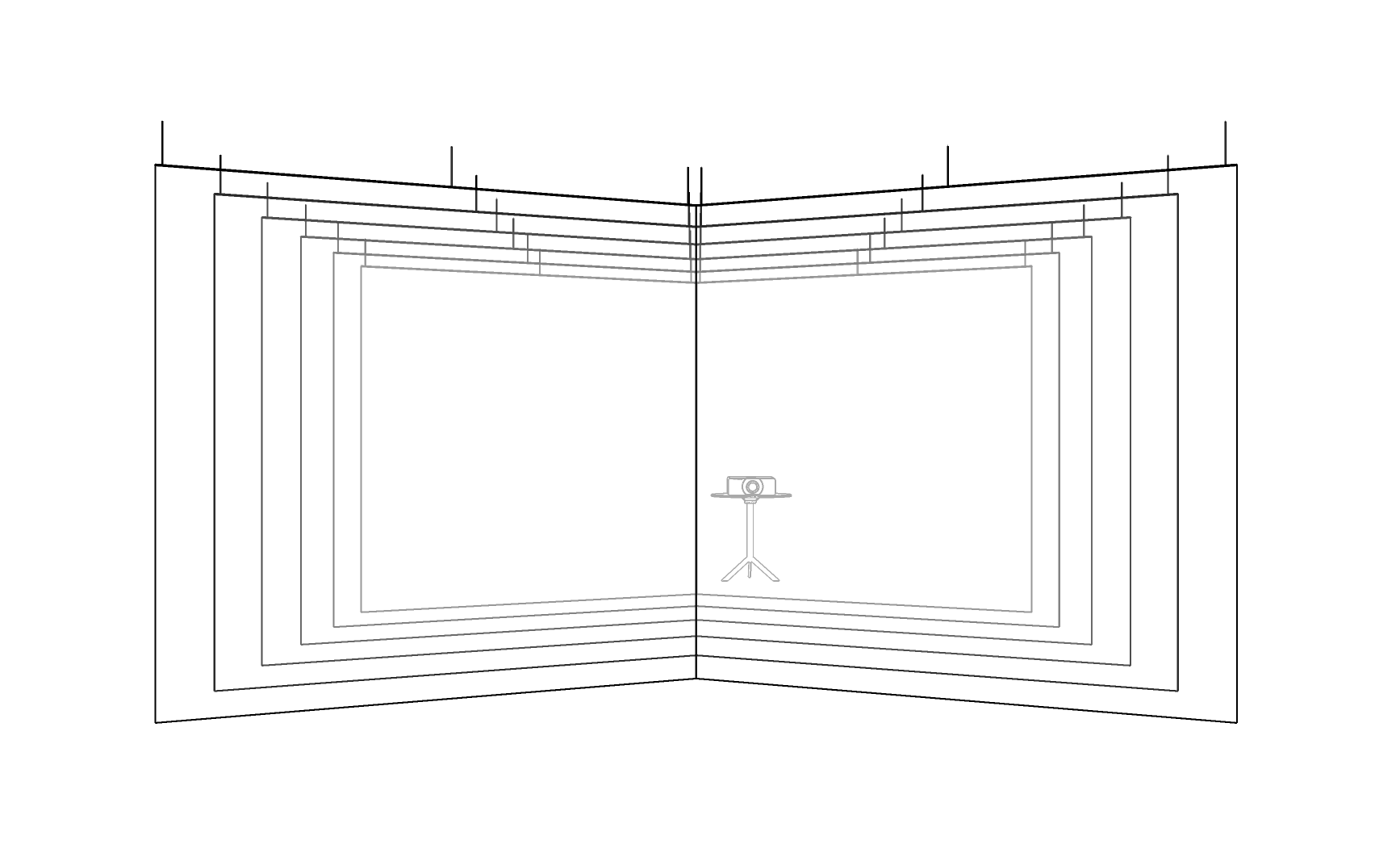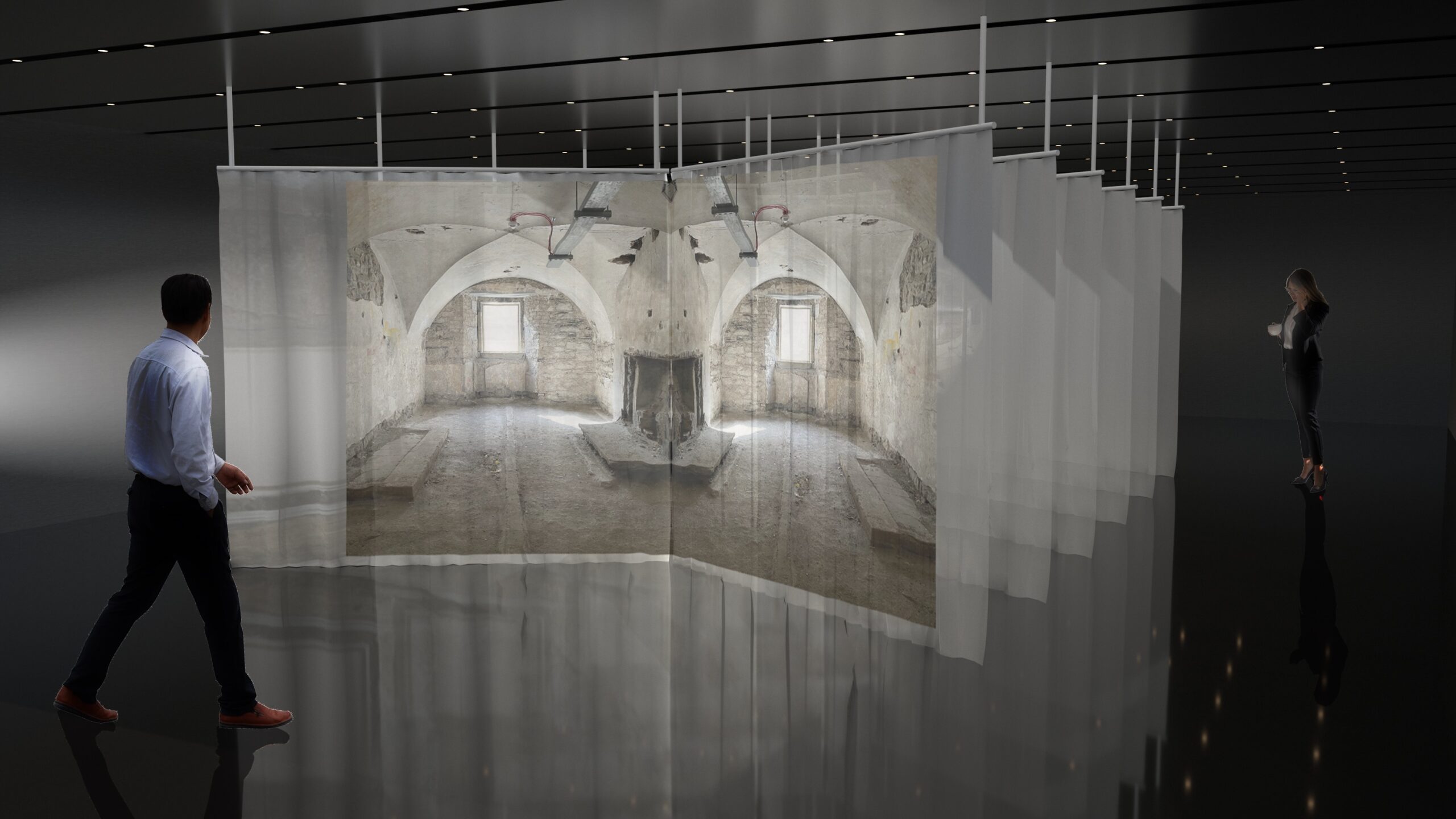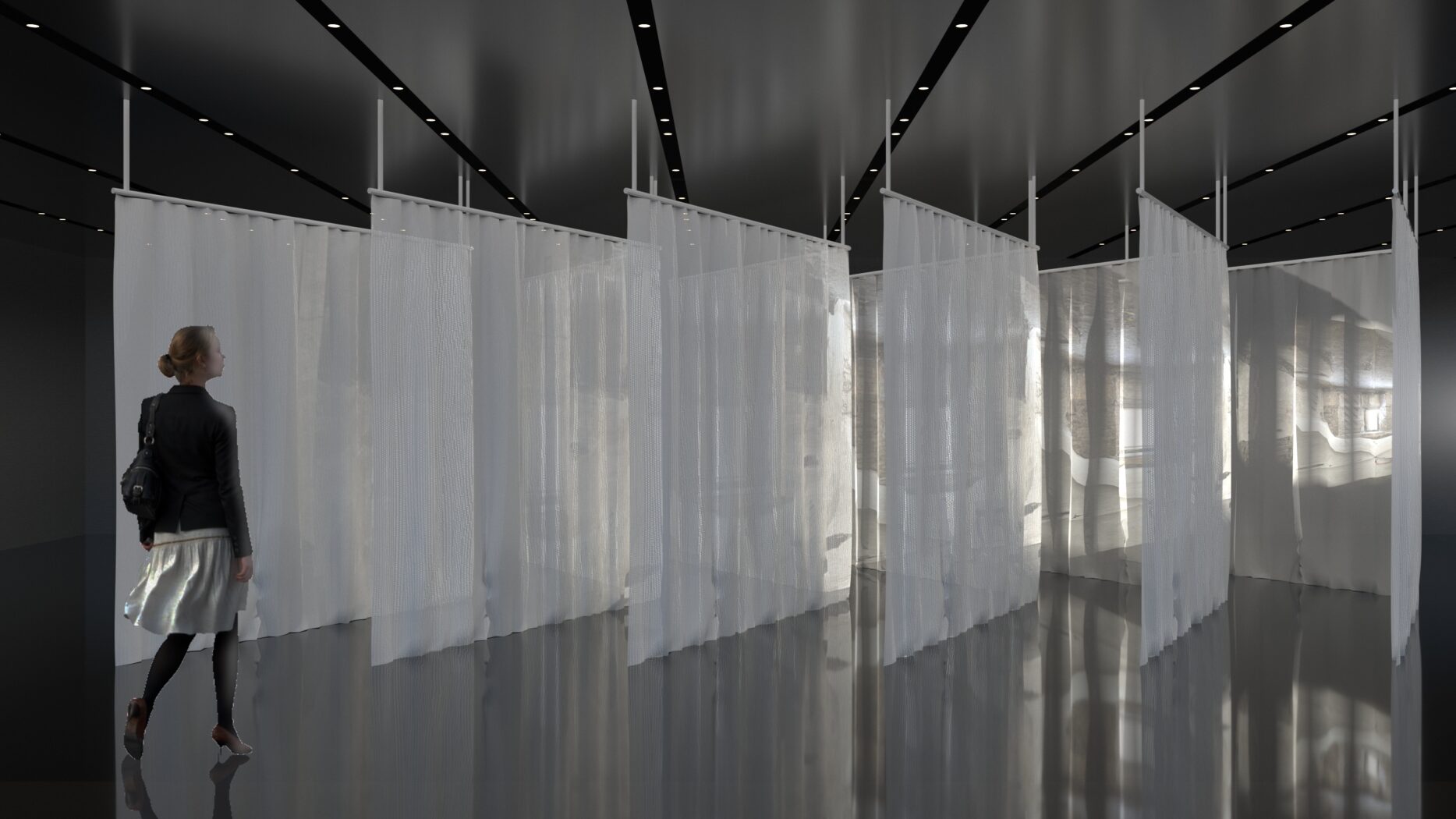
The Third Space: A study of connecting with abandonment
How can memory be restored to a place of abandonment without causing disturbance to its temporal narratives?
ʻThe Third Spaceʼ is a research project which centres on creating a method which would allow for the preservation of memory. This is conducted through the particular focus on temporality and space, specifically looking at abandoned spaces and ruins and their connection to the general public. It aims to examine how memory and history is lost through this abandonment and determines how this issue can be rectified through the form of an installation. With a large number of ruins being forgotten, it is important to determine a method in which this does not occur. Even through the process of restoration, there is a potential risk of losing the historical narrative of a space as the process sometimes focuses on preserving a singular narrative instead of all aspects of a ruin.
As such, the project explores the history of ruins, not only focusing on their physicality, but also on the emotions they evoke and how these narratives are often portrayed. The research hopes to renew the usefulness of such spaces, and propose a method to establish a connection with these otherwise forgotten and unused places. Through the experimentation process, the project draws on the idea of the ʻthird spaceʼ in order to force interaction with spaces that are left unused. It also explores the ideas of how this may be conducted, and challenges the theories of conservation through various case studies.
"Ruins may be decaying, they are not dead, they are filled with possibilities for wondrous adventure, inspiring visions, quiet moments, peripatetic playfulness, dystopic preparation and artistic potential.” - Bradley Garrett
With the research question drawing attention to memory and its need for restoration in places of abandonment, it was crucial to examine various forms in which this could be achieved. Throughout this research process, numerous possibilities for restoring memory to a place are revealed, with some more invasive than others. Each design process explores a method which could potentially work for a given circumstance or ruin.
The concept for design A was the most complex and was designed for a stable ruin, one that is not protected or fragile and would thus allow for the possibility of an installation to take place within its walls. It was largely focused on re-establishing a sense of connection with a space, especially one that has been left abandoned for a long time. Therefore, its focus was on enforcing an atmosphere and allowing individuals to experience a ruin using the ruin itself. The contemporary aspect of the installation pointed to the connection of the past and present, representing the layers of history that is found in these spaces.
Concept design B focused on ruins that are not accessible to the public, due to being unstable or set to be demolished. Out of all of the design proposals, this one was the most invasive particularity due to the fact that it involved the transferring of the ruin itself (or its fragments) to a secondary location. The major themes in this proposal included the relationship between the past and present, along with the focus on memory and what it left behind.
The concept for design C focused primarily on the presence and loss of colour within abandonment, along with its significance to a ruin and its accompanying narrative. The research focused on the idea of how colour, light and perspective affects the perception of a space and how the combination of all three can be used to create ‘the third space’ in order to restore memory to a place of abandonment.
“Memory is always […] falling into ruin; but the ruins themselves, […] are treasures: our links to what came before […]. To erase the ruins is to erase the visible public triggers of memory; a city without ruins and traces of age is like a mind without memories.” - Rebecca Solnit
Ultimately, each design stage had some influence on the design of the final proposal. With memory being a key factor to the project, it was imperative to bring it to light without losing the experience of the physical ruin. Each stage drew attention to the need for connecting with abandonment, and the sense of physically experiencing a space was the most important factor. However, as discussed throughout the research, it is not always possible to do so especially with ruins that are unsafe or closed off to the public. Therefore, the idea of the ʻthird spaceʼ was essential in attempting to translate the atmosphere of a ruin into a secondary space. The third space which is an ʻin-betweenʼ space, is often created through circumstance or through its temporary function. As such, in the final design of the installation, the third space is formed by the presence of the narrative which is portrayed through the fabric screens and the light from the projectors. As a result, while it may not be possible to experience the real physical place, its atmosphere can be replicated through light and the essence of the third space.
Although the research proposes a final concept for the installation, its layout and design does not need to be identical for every ruin. With the third space, the installation can be adapted to suit each narrative of a chosen ruin. The location of the installation would also impact its design. However, the final design is not as important as the message that it portrays, which is the fact that in order to prevent the loss of memory in abandonment, actions need to be taken to preserve their temporal narratives.
